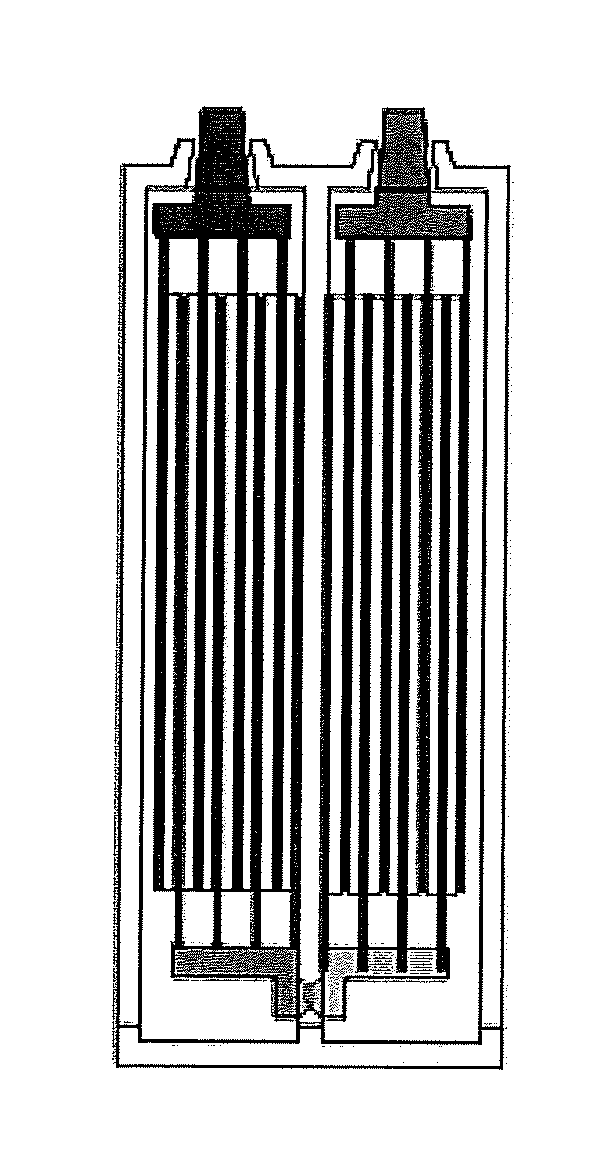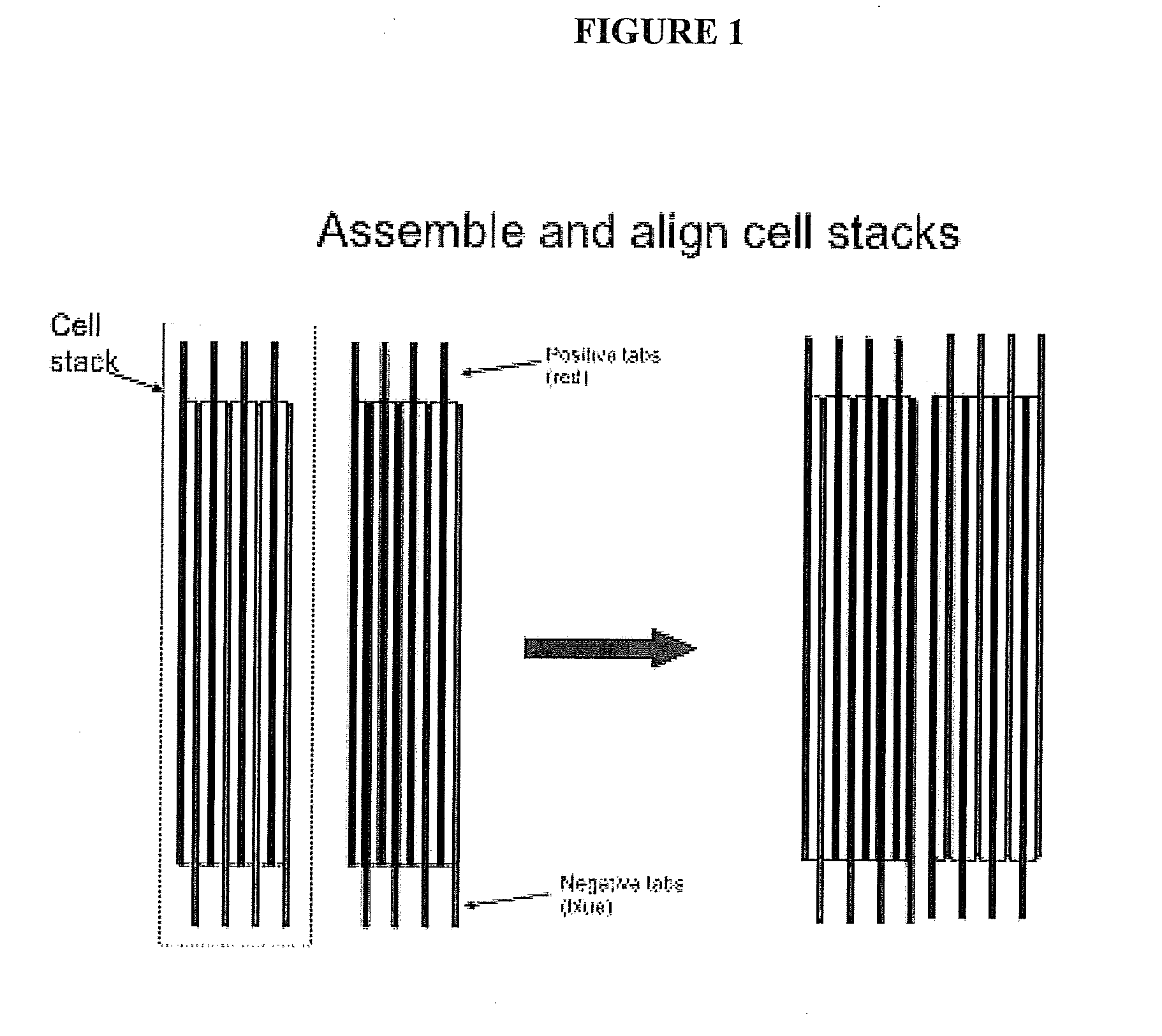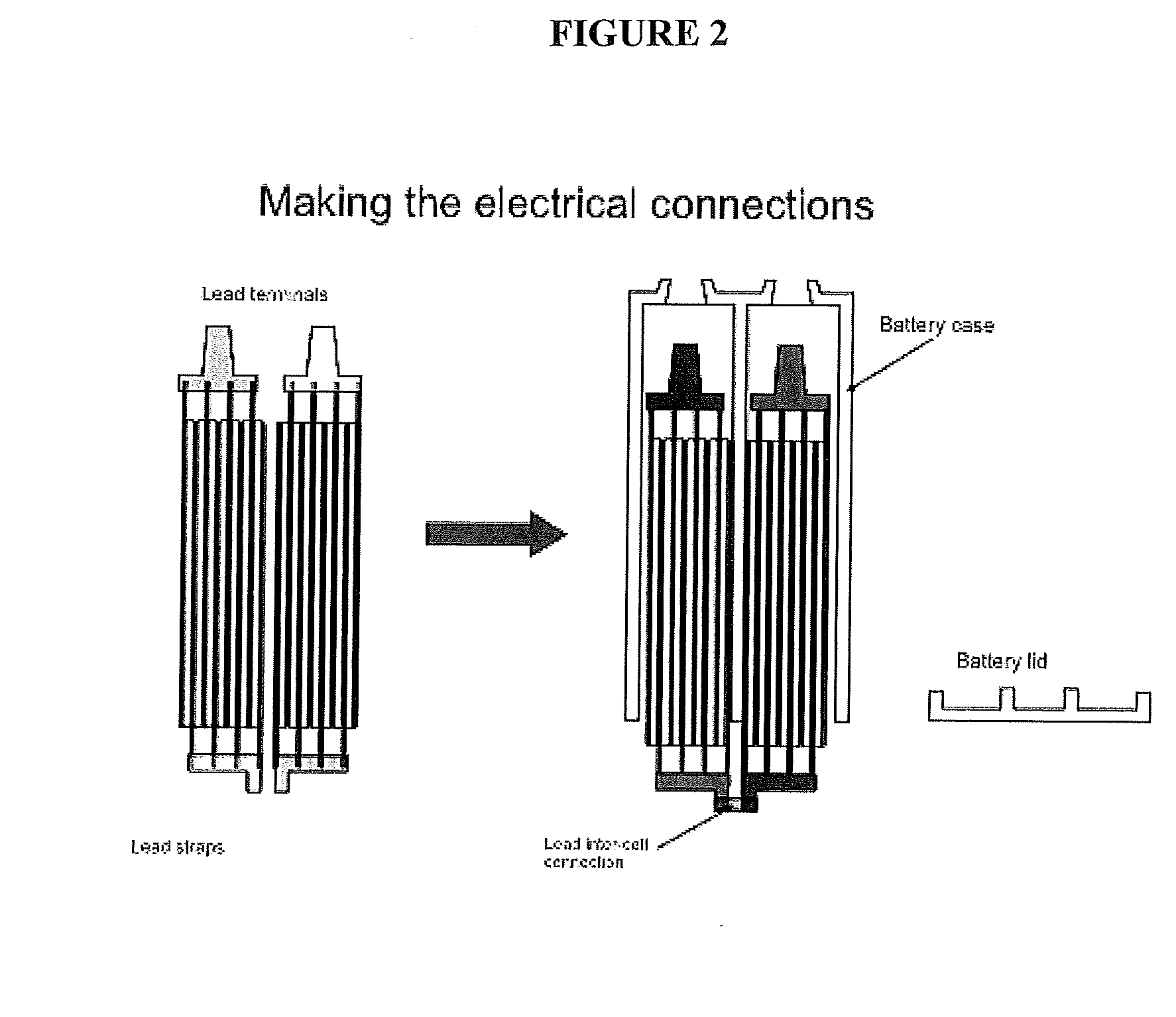In a traditional design, the electroactivity between the plates and
electrolyte is uneven, with some areas having high electroactivity and some low.
Areas of low electroactivity do not produce power and are thus undesirable.
This battery presented potential drawbacks such as shorts from loose conductive fibers, intercell leaks and negative grid
corrosion.
This design, however, is difficult to manufacture.
Such designs are sensitive to the length of the cabling needed to connect the terminals since terminals are arising from both ends of the battery.
The end that needs the longest cable will have a higher resistance path and thus negate much of the improvement in electroactivity between the plates.
While promising, opposing tab batteries also proved to be more costly to manufacture due to the complexity of the connections, which in turn required more complex battery cases with a greater number of the seals that are required for a sealed
lead acid battery.
1. The battery terminals are on opposite sides of the battery making connection difficult;
2. Terminals on opposite sides of the battery make sealing more complex because of the increased complexity of the case;
3. Efforts to
route the battery terminals to the same side of the battery greatly increases cost, size, and weight;
4. Opposing terminal batteries have required an investment in new equipment specific to their
processing;
5. Battery terminals on opposite ends of the battery are non-standard, making the end-user also invest in new
racking system design; and
6. Opposing tab batteries have only been for individual 2V cells, which increases cost to higher
voltage systems.
Lead-acid batteries now use small pores, and great effort (both process and
chemistry) is put into mixing active-material that is packed around the
electrode to create this small network of pores.
This reaction is the creation of lead sulfates, which are quite large and tend to block the movement of more electrolytes deeper into the plates.
This well known surface
sulfation problem is familiar to the layman as the tendency of auto batteries to
crank the engine well on a first start attempt, followed by progressively weaker cranking by the battery with further start attempts if the engine does not start at first.
Electrolyte surface-tension and material surface energies are difficult to modify without adversely affecting battery function.
It was believed from past experience with gel electrolytes in batteries discussed in publications, that the gel particles create a tortuous path that slows
ion-mobility between plates, and that this reduces high-rate
discharge capacity considerably from non-gelled-electrolyte batteries.
“Gel
Cell Batteries do not offer the same
power capacity as do the same physical size AGM battery.
However, the Gel
Cell excels in slow
discharge rates and slightly higher operating temperatures and with excellent deep cycle capability.” from http: / / www.atbatt.com; “Gel is an older technology than RBSM technology for valve regulated lead acid batteries: gel batteries have been around for many years but have not been widely used except for special applications.
The gel
system has an inferior performance at high discharge rates, therefore it is not suitable for applications such as SLI requiring a
high rate discharge capability.” From: A guide to
VRLA Battery Formation Techniques by Mike Weighall and Bob Nelson; “ABSORBED GLASS MAT BATTERIES: These are state of the art batteries.
Unfortunately this electrolyte thickening decreases the mobility of the ions which results in increased
internal resistance.” From Oddmix.com.
Battery plates with a substantial number of large open pores, larger than about a 50 microns minor
diameter, have difficulty retaining electrolytes in the large pores.
Even if initially filled with electrolytes, once the pore is emptied thru gassing or
drying, there is generally insufficient capillary attraction to refill the pore.
Once dry they are unlikely to refill.
 Login to View More
Login to View More  Login to View More
Login to View More 


